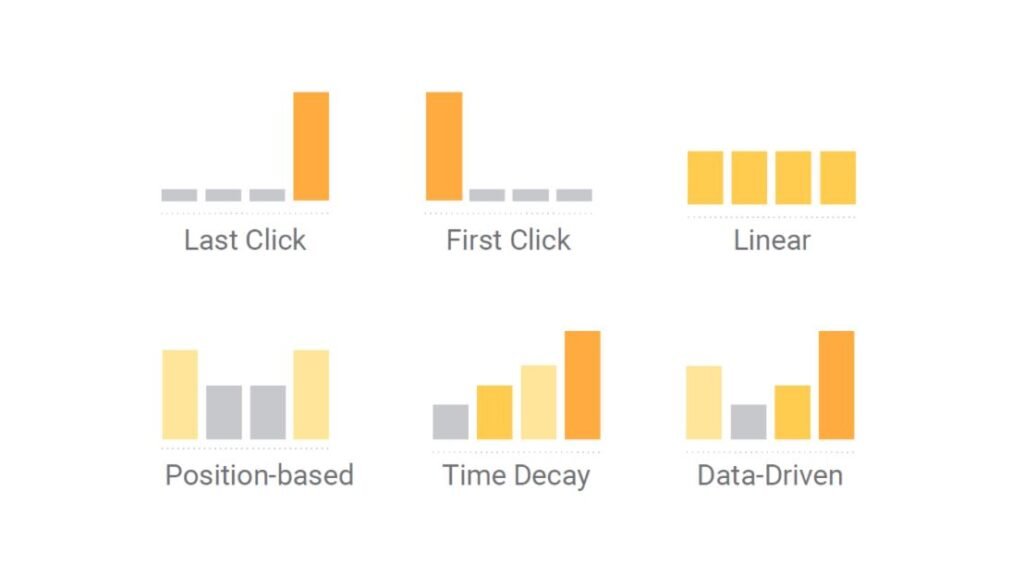A new change is coming to Google Ads: the internet giant announced that it will update its attribution model and the last click, which until now was its default option, will give way to data-driven or data-based attribution.
Table of Contents
Google dismisses the last click as the default attribution model
Attribution based on the last click is based on attributing all the value of the conversion to the last point of contact with the consumer before making a purchase. Under the data-driven scheme, Google will use the full force of its machine learning to assess the buyer’s entire journey: from how conversions are measured to how to improve automated offers in the ad buying process, ceasing to rely solely on the latest consumer interaction. Thus, machine learning will become essential to evaluate the data throughout the conversion process.
The data-driven attribution model is not new, however, it was not available to all marketers due to minimal data requirements and some other limitations that made it not work well for small budgets, but according to the company, that already has been fixed and all Google Ads users will have this model selected in Google Ads by default. The change will begin to roll out from October and will be enabled for all users in 2022.
“Faced with a changing privacy landscape, marketers need new measurement approaches that meet their goals and put users first. That’s why we’ve invested in new tools to help them prepare their metrics in the future, “ said Vidhya Srinivasan, vice president of metrics and analysis of Google in its statement.
“Machine learning can be used to fill gaps in observed data and discover new insights into consumer behaviour, for example, continue to measure even when cookies or other identifiers are not present. “
Also Read: Alternatives to Google: Most Popular Web Search Engines
This is data-driven, the model that allows evaluating all conversion packs
“Data-Driven is data-driven and is used on many platforms: they are statistical and mathematical models that allow evaluating all conversion paths, down to that do not convert, and compares them. Using this information, they assign credit to each of them. In this way, your attribution model is changing to be the most correct possible. “
That is, under this attribution model, Google will distribute the merit of the conversion between the different paths or impressions that have led the consumer to the purchase, including dynamic and real-time data, so it will provide more useful information that can determine the evolution of user behaviour throughout the buyer journey, on different devices, browsers or apps, and of course it will allow the advertising investment to be directed more effectively.
The attribution models that will be available in Google Ads
The data-driven model will be activated by default for all advertisers, regardless of the budget they manage in Google Ads, and any marketer who wishes to switch to last-click attribution will be able to do so since it will be available among the different options. within the platform, among which are the attribution models :
- Last click, which attributes all the values of the conversion to the ad that received the last click and the corresponding keyword.
- First click, whose attribution of the conversion value is made to the ad that received the first click, and its corresponding keyword.
- Linear, spreads the attribution of conversion across all ad interactions on the route equally.
- Time decline, which places more value on ad interactions that occur closer to conversion.
- Based on rank, it attributes 40% of a conversion value to both the first and last ad interactions, as well as the corresponding keywords, while the remaining 20% is spread across other interactions.
- Data-Driven distributes the contribution to conversion based on the historical data of that conversion action. It differs from the other attribution models because it uses your account’s conversion data to calculate the actual contribution of each interaction on the conversion path.
In addition to offering a much clearer vision of consumer behaviour and a better overview that allows more informed decisions about the distribution of advertising investment, this change also responds to the upcoming disappearance of third-party cookies, since projections of data carried out by the algorithms will be those that fill the information gaps when it comes to plotting conversions, a model that, although it does not improve in the aspect of data privacy by itself, does offer more information to advertisers in the next scenario in which they will not be able to directly link the user with the last action.

